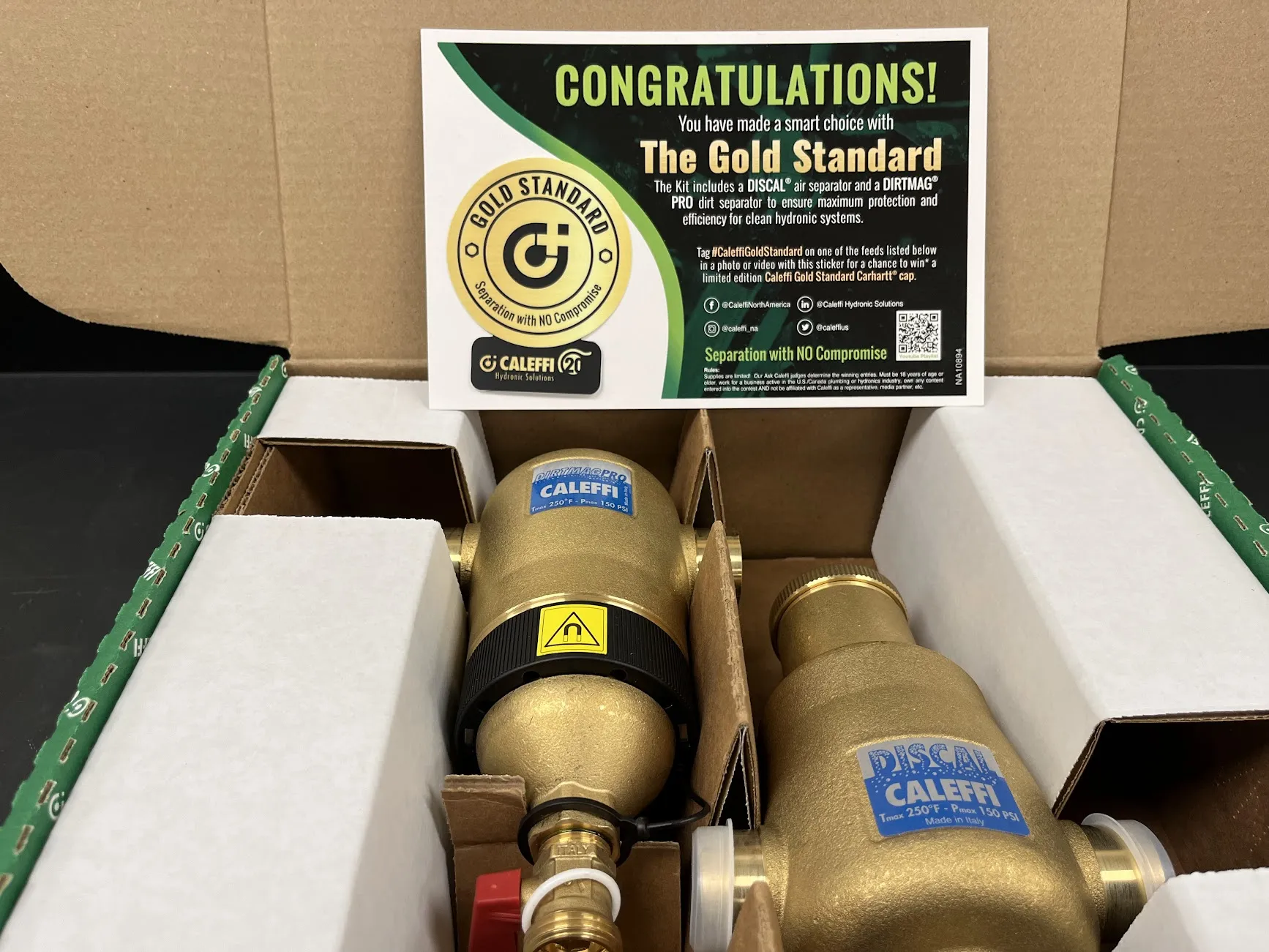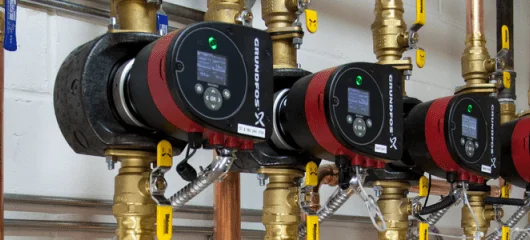
The simple answer, if it is water, it should look clear or no darker than a weak cup of tea. If it is a glycol/water mixture, it should still have the same color of the original glycol (often blue, pink, clear). Black is bad.
The more complex answer is the topic of idronics #18, Water Quality in Hydronic Systems.
“In addition to H2O molecules, the ‘ideal’ water for use in hydronic systems would contain very little (but not zero) soluble substances (e.g., molecules or ions of other materials that coexist with H2O molecules). Examples of the latter include calcium, magnesium, sodium, iron, chlorine, sulfur, oxygen, carbon dioxide and nitrogen. The ‘ideal’ water would also be free of insoluble substances such as oils, grease, fine sand or metallic particles. It would be non-aggressive toward any of the metal, polymer or elastomeric materials in the system. It would also have very low electrical conductivity (to be discussed later) and would not contain microorganisms such as bacteria or algae.”
Water in this “ideal” form is virtually impossible to find, especially when sourced from wells or municipal water systems.
As is true with many other design and installation issues, hydronic heating professionals need to provide realistic approximations of ideal conditions. In the case of water, they need to know if the water that’s readily available at the site of the hydronic system is suitable for use in that system, either as it exists directly from its source or after it has been modified by various processes. The goal is to operate the system with water that will not adversely affect the performance, reliability or life expectancy of the hydronic system. Water quality in hydronic systems can be divided into two categories:
• Physical water quality relates to issues such as capturing and eliminating air and dirt from the system. High-performance air separators (DISCAL®) and dirt/magnetic separators (DIRTMAG® PRO) are key in this category. They are available as a package in a single box; we call it the Gold Standard Kit.
• Chemical water quality relates to turbidity, microbial corrosion, scaling, the chemical properties of salts among many other attributes. Demineralized water (water/glycol mixtures) are often the best foot forward. Water quality is a moving target, especially if there is a system leak and fresh water is being consistently introduced. Fresh air and mineral laden water will accelerate the degradation of water quality in a closed-loop system. Learn more about this topic in a Coffee with Caleffi™ webinar titled, Maintaining High Fluid Quality in Modern Hydronic Systems. sert here the description









